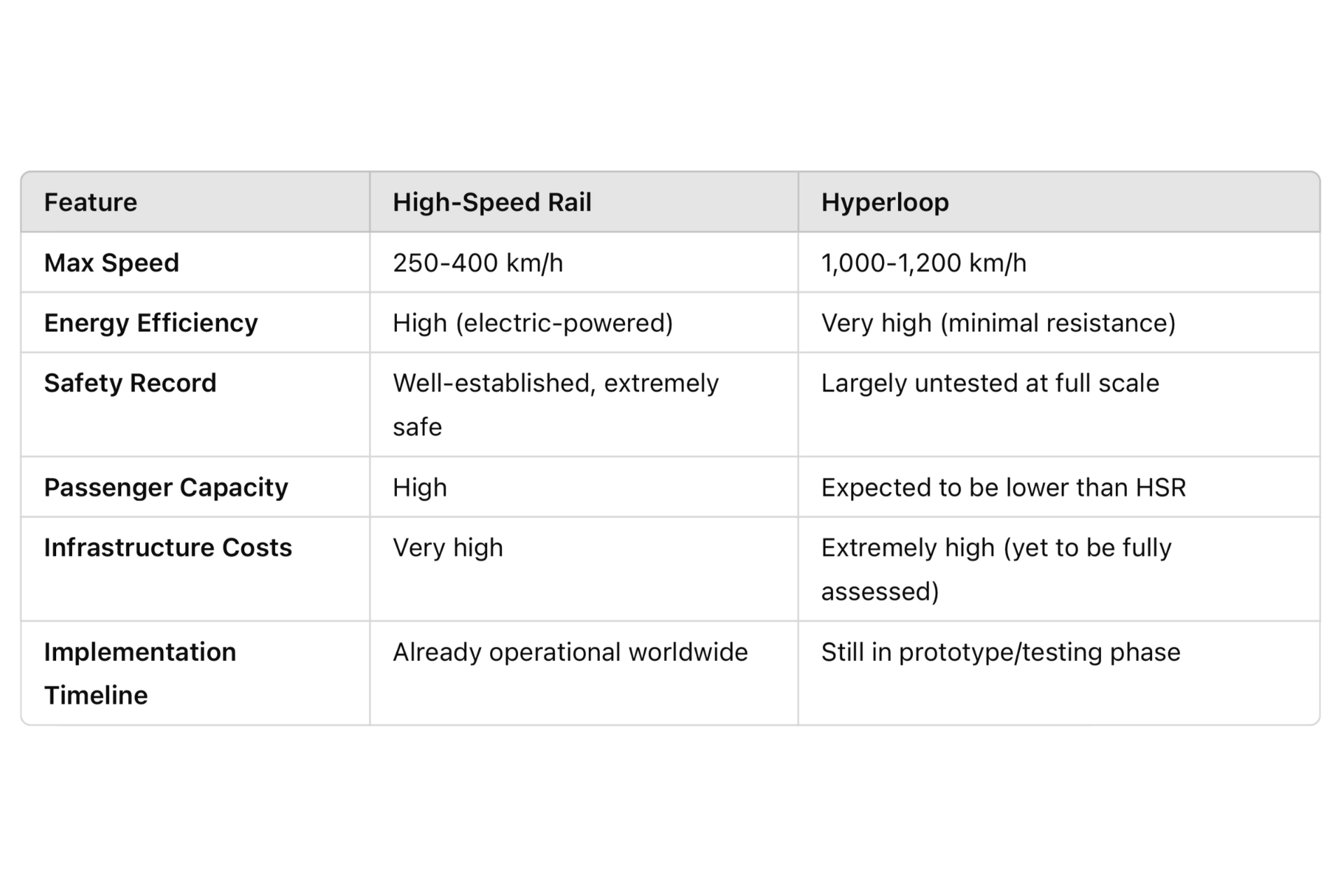Hyperloop vs. High-Speed Rail, What’s Next for Fast, Sustainable Transport?
As the world moves toward more efficient and sustainable transport solutions, two technologies stand out in the race for the future of high-speed travel: high-speed rail (HSR) and the Hyperloop. High-speed rail has already revolutionised transportation in countries like Japan, France, and China, offering a reliable and relatively green alternative to air and road travel. Meanwhile, the Hyperloop, a futuristic concept championed by Elon Musk and various startups, promises near-supersonic speeds through low-pressure vacuum tubes. Both systems claim to be fast, sustainable, and game-changing for global mobility, but how do they really compare? And, which is more likely to become the dominant force in high-speed transport?
High-Speed Rail (HSR) uses conventional steel-wheel-on-rail technology with advanced aerodynamics and tilting mechanisms for stability at high speeds, and is able to operates at speeds of 250-350 km/h (155-217 mph), with some reaching 400 km/h (249 mph). It runs on electric power, making it a cleaner alternative to air travel, especially when powered by renewable energy sources, and requires dedicated tracks and extensive infrastructure, including bridges, tunnels, and stations. Whereas Hyperloop is a proposed system where pods travel inside low-pressure vacuum tubes, drastically reducing air resistance and friction, which makes them theoretically capable of reaching speeds of over 1,200 km/h (745 mph). It use magnetic levitation (maglev) or air-bearing technology to minimise ground contact and drag, and is designed to be fully electric, with potential for renewable energy integration (solar panels on tube structures).

While Hyperloop offers theoretical speed advantages, high-speed rail is already a proven and scalable solution with widespread adoption. The Hyperloop remains experimental, with major engineering and regulatory hurdles to overcome.
Both technologies aim to be more eco-friendly than air and road transport, but their sustainability potential differs with high-speed rail already reducing carbon emissions, especially in countries where it runs on renewable electricity. It also has a high passenger capacity, making it efficient for mass transit. Whereas hyperloop is designed to be ultra-energy efficient, but its impact remains uncertain until full-scale systems are deployed. Large infrastructure projects for vacuum tubes could have high material and construction emissions, which is why from an environmental feasibility standpoint, high-speed rail currently holds an edge due to its immediate applicability.
High-speed rail will continue to expand, especially in Asia and Europe, where networks are growing and improving, and countries like the U.S. are also investing in high-speed rail corridors. Hyperloop may eventually complement high-speed rail, offering ultra-fast, long-distance travel where traditional rail is impractical, however, full-scale commercial Hyperloop systems are still years away; regulatory and infrastructure challenges for Hyperloop (including land acquisition, safety approvals, and cost concerns) will dictate its rollout timeline.
High-speed rail is already a transformative force, reshaping global transportation. Hyperloop, while promising, remains a concept in development, requiring significant breakthroughs before it can compete on a large scale. The real question is not whether one will replace the other, but rather how both can be integrated into the future of sustainable, high-speed transportation. In the near term, HSR remains the best scalable solution, while Hyperloop’s potential could redefine travel for the next generation.
At Deploy, we’re committed to supporting the infrastructure projects that drive innovation and sustainability in transport. Are you looking for skilled professionals to power the future of rail and infrastructure? Connect with Deploy today and let’s build the next generation of sustainable transport together.







